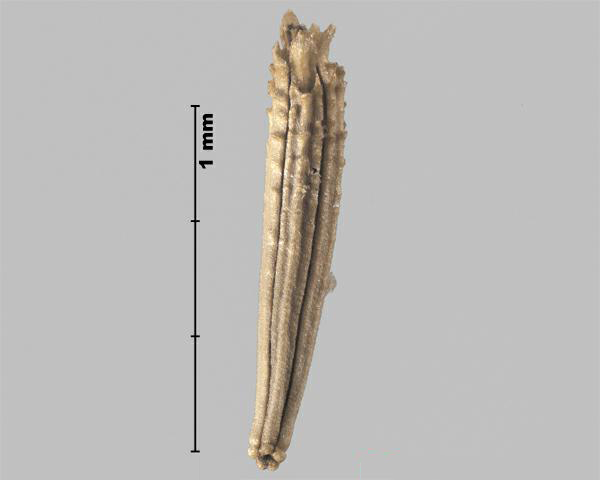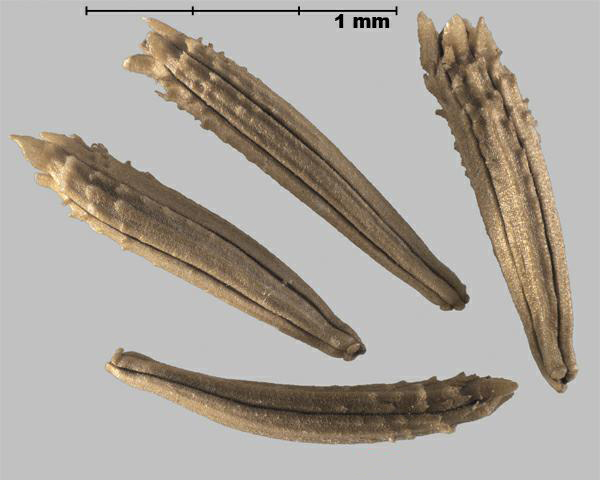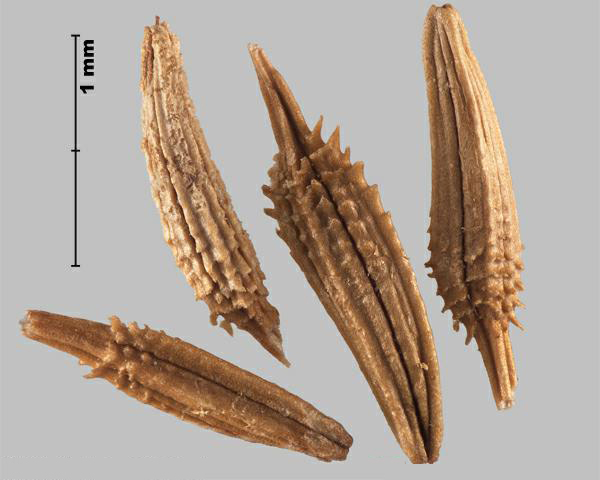Family
Asteraceae
Common Name
Rush skeletonweed
Regulation
Primary Noxious, Class 2 in the Canadian Weed Seeds Order, 2016 under the Seeds Act.
Distribution
Canadian: Occurs in BC and ON (Brouillet et al. 2016Footnote 1).
Worldwide: Native to northern Africa, temperate Asia and Europe. Introduced to North America, Argentina, Latvia, Australia and New Zealand (USDA-ARS 2016Footnote 2). Infests millions of acres in Washington, Idaho, Oregon and California (FNA 1993+Footnote 3).
Duration of life cycle
Perennial
Seed or fruit type
Achene
Identification features
Size
- Achene length (without style): 3.0 - 4.0 mm
- Achene width: 0.5 - 1.0 mm
- Length of achene style: 5.0 - 6.0 mm
Shape
- Achene is oblong, tapering to a truncate base, compressed laterally
Surface Texture
- Woody, dull, with small overlapping flat spines at the top of the achene
Colour
- Achene is yellow-brown
Other Features
- A remnant style extends from the top of the achene which is usually broken off in samples.
Habitat and Crop Association
Cultivated fields, pastures, rangelands, forests, roadsides and disturbed areas (Darbyshire 2003Footnote 4). A serious weed of wheat in Australia (FNA 1993+Footnote 3).
General Information
Rush skeletonweed was first reported in the United States near Spokane, Washington in 1938 (Shelly 1994Footnote 5), and is now found in the northern regions and California (Kartesz 2011Footnote 6). Rush skeletonweed is often found on well-drained, light soils (Shaw et al. 2008Footnote 7).
One plant may produce as many as 15,000–20,000 seeds (Ministry of Agriculture, Food, and Fisheries 2002Footnote 8). Seeds are dispersed by wind and animals over considerable distances (Shaw et al. 2008Footnote 7).
Similar species
Dandelion (Taraxacum officinale)
- Dandelion has a similar oblong shape, yellow colour and style remnant as rush skeletonweed.
- Dandelion achenes are shorter, wider, a darker colour and the flat spines at the top extend further down the achene than rush skeletonweed.
Photos


Similar species
